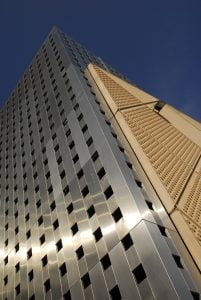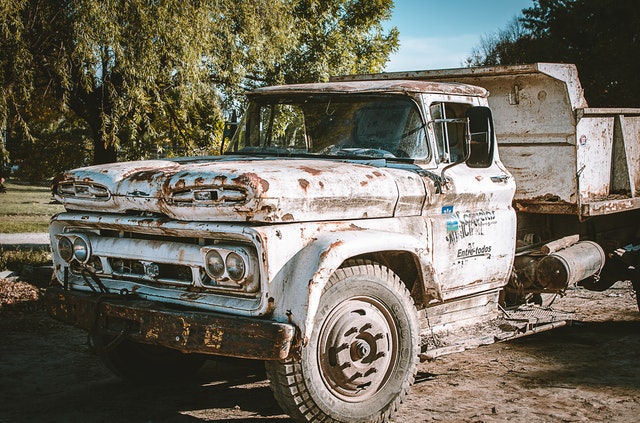Concrete Coastal Construction: Beware Saltwater & These Other Dangers
 Corrosion of reinforcing steel and other ferrous metal is one of the biggest causes of deterioration in coastal construction projects. The invasion of salt and moisture -- inevitable near the ocean -- results in accelerated corrosion of reinforcing steel, exposing the vulnerable concrete within.
Corrosion of reinforcing steel and other ferrous metal is one of the biggest causes of deterioration in coastal construction projects. The invasion of salt and moisture -- inevitable near the ocean -- results in accelerated corrosion of reinforcing steel, exposing the vulnerable concrete within.
In addition to durability against the elements, your coastal project needs to resist flood and wind hazards and ideally be relatively maintenance-free. (Unfortunately, all coastal buildings will require more maintenance and repairs than inland structures.) It’s important to protect the steel reinforcement or else corrosion will inevitably weaken your concrete, reducing its load-carrying capacity and inviting safety hazards.
Here’s what you need to know about saltwater and your concrete-and-metal-based coastal construction. Need additional facts on safeguarding your application? Here’s more help.
Coastal Construction: Location, Location
Just like to real estate agents, location should matter to architects -- especially by the seashore. Metal corrosion most severely affects coastal properties within 3,000 feet of the ocean.
Whether your structure is submerged in seawater or plays a big part in how it will hold up. Parts of your building may be:
- Fully submerged
- Intermittently wet and dry (due to being in the splash and tide zone)
- In the atmospheric zone (above high-tide level)
Low oxygen availability limits underwater corrosion, while lower chloride and moisture content limit corrosion above high-tide level. Therefore, corrosion is worst within the splash and tidal zones, where a persistent wetting-drying cycle results in high chloride and oxygen content.
Other corrosion factors include:
- Wind speed and direction
- Degree of sheltering (Will your project be surrounded by other buildings or fully exposed?)
- Elevation
- Rain frequency and heaviness
- Relative humidity
- Metal surface temperature
What Happens?
When steel reinforcement corrodes, the byproduct occupies more than 3x the volume of the original steel, exerting great tensile stress on the surrounding concrete and leading to further cracking and exposure to weather, which in turn creates additional corrosion. It’s a deadly cycle, we tell ya.
Again, numerous environmental factors determine how severe corrosion will be on your coastal architecture. In mild cases, your project may only sustain rust staining. In serious cases, the concrete may fail completely.
So, What Can You Do?
Stainless steel is the most corrosion-resistant architectural metal option for salty locations. As always, metal and grade choices still depend on your application.
Indeed, many builders choose hot-dip galvanized steel or stainless steel for exterior applications. Stainless steel’s durability is favorable in practically all locations, while hot-dip galvanized steel is appropriate in fewer instances. Galvanized’s famous protective zinc coating reacts with chlorides when wetted, causing zinc corrosion products to form. Those corrosion products dry, but they’re eventually washed away when the steel is sprayed again. The process repeats until the coating is a goner
Hot-dip galvanized steel remains popular because it adds a corrosion-resistant layer while remaining cheaper than stainless steel. Even hot-dip can resist corrosion 30x better than regular steel (depending on environment), so it’s better than nothing.
Learn more about the best metals for coastal architecture here.
In all cases, you should protect reinforced steel from corrosion with careful workmanship and sound:
- Concrete
- Masonry
- Mortar
- Grout
Coastal Concrete Construction Gone Bad
Sometimes the best way to do something right is to see someone do it wrong.
In Seattle several years ago, a crew used galvanized steel for a cap and banding anchoring system that tied wooden pier posts to the concrete deck they support. Once the banding corroded away, the pier became structurally unsound. The galvanized steel bolts anchoring the concrete to the wood also were eaten away.
As the steel corroded, it expanded, and one bolt cracked the concrete deck. Structural failure of the pier loomed, forcing the city to act.
Another case: A seaside restaurant once used galvanized steel for a side door because it was cheaper. Saltwater spray during storms accelerated its corrosion.
Without a new protective coating applied, corrosion hastened even more because the galvanized coating on the carbon steel wore away.
Moral of the stories? Think about how long you’d like your metal and concrete to last, then determine whether a more expensive metal is worth it in the long run.
Prepare Yourself
If you’re planning to build on the coast, remember:
- Your location and several other factors affect your structure’s corrosion risk.
- Corrosion and cracking can lead to bigger expenses than choosing a more resilient metal in the first place.
- Temporary or non-aesthetic structures may not need a more durable metal.
You May Also Like
These Related Stories

Salty About Coastal Construction? Use the Right Architectural Metal

Best Metals for Exterior Architecture | Corrosion-Resistant Metals




